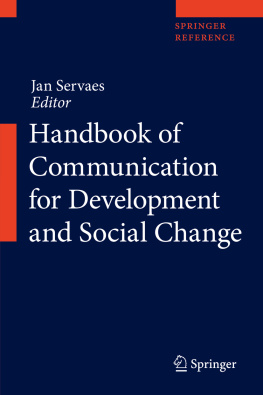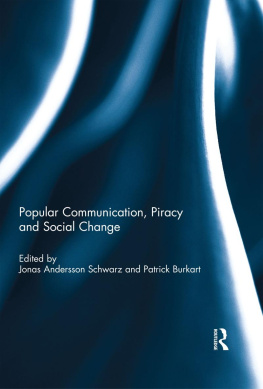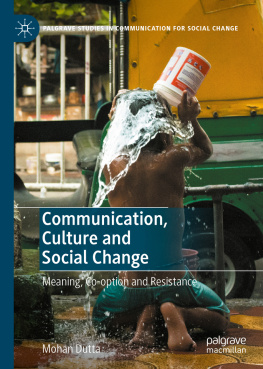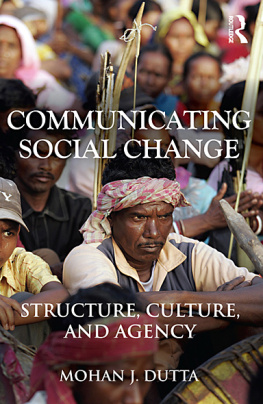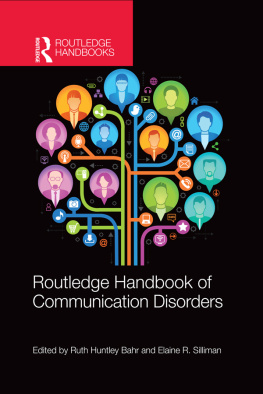Jan Servaes - Handbook of Communication for Development and Social Change
Here you can read online Jan Servaes - Handbook of Communication for Development and Social Change full text of the book (entire story) in english for free. Download pdf and epub, get meaning, cover and reviews about this ebook. year: 2020, publisher: Springer Singapore, genre: Politics. Description of the work, (preface) as well as reviews are available. Best literature library LitArk.com created for fans of good reading and offers a wide selection of genres:
Romance novel
Science fiction
Adventure
Detective
Science
History
Home and family
Prose
Art
Politics
Computer
Non-fiction
Religion
Business
Children
Humor
Choose a favorite category and find really read worthwhile books. Enjoy immersion in the world of imagination, feel the emotions of the characters or learn something new for yourself, make an fascinating discovery.
- Book:Handbook of Communication for Development and Social Change
- Author:
- Publisher:Springer Singapore
- Genre:
- Year:2020
- Rating:4 / 5
- Favourites:Add to favourites
- Your mark:
- 80
- 1
- 2
- 3
- 4
- 5
Handbook of Communication for Development and Social Change: summary, description and annotation
We offer to read an annotation, description, summary or preface (depends on what the author of the book "Handbook of Communication for Development and Social Change" wrote himself). If you haven't found the necessary information about the book — write in the comments, we will try to find it.
Jan Servaes: author's other books
Who wrote Handbook of Communication for Development and Social Change? Find out the surname, the name of the author of the book and a list of all author's works by series.
Handbook of Communication for Development and Social Change — read online for free the complete book (whole text) full work
Below is the text of the book, divided by pages. System saving the place of the last page read, allows you to conveniently read the book "Handbook of Communication for Development and Social Change" online for free, without having to search again every time where you left off. Put a bookmark, and you can go to the page where you finished reading at any time.
Font size:
Interval:
Bookmark:
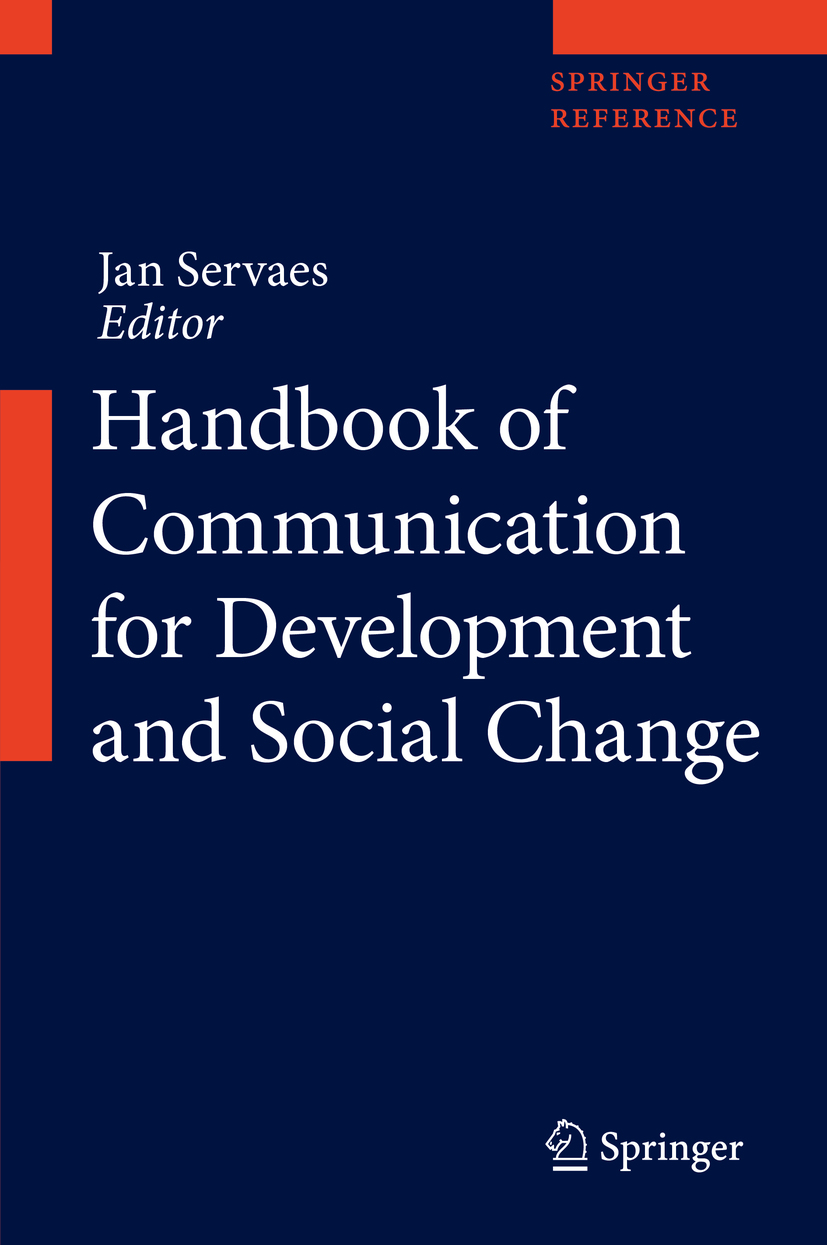

This Springer imprint is published by the registered company Springer Nature Singapore Pte Ltd.
The registered company address is: 152 Beach Road, #21-01/04 Gateway East, Singapore 189721, Singapore
This Handbook of Communication for Development and Social Change provides a single reference resource regarding communication for development and social change. Increasingly, one considers communication crucial to effectively tackle the major problems of today. Hence, the question being addressed in this handbook is, Is there a right communication strategy? Perspectives on sustainability, participation, and culture in communication have changed over time in line with the evolution of development approaches and trends, and in response to the need for effective applications of communication methods and tools to new issues and priorities.
In essence, the coherence of Communication for Development and Social Change (CDSC) is expressed in its different common underlying premises. In all its diversity, such as in theory, method, medium, and region, it is characterized by a number of underlying common values and starting points.
The use of a culturalist viewpoint
By means of such a viewpoint, specific attention is given to communication in social change processes. By putting culture centrally from a users perspective, other social science disciplines can significantly contribute to the field of Communication for Development and Social Change.
The use of an interpretative perspective
Participation, dialogue, and an active vision of human beings as the interpreters of their environments are of the utmost importance. A highly considered value is the showing of respect and appreciation for the uniqueness of specific situations and identities in social change environments.
The preference for a transdisciplinary approach
While interdisciplinary collaborations create new knowledge synthesized from existing disciplines, a transdisciplinary approach relates all disciplines into a coherent whole. Transdisciplinarity combines interdisciplinarity with a participatory approach.
The field of sustainability is, in essence, a transdisciplinary one.
The use of integrated methods and theories
In the field of Communication for Development and Social Change, it is considered important that the chosen methods should be connected with the used theoretical perspective. This implies that openness, diversity, and flexibility in methods and techniques are valued. In practice, it generally means triangulation and a preference for qualitative methods. This does not mean, however, that quantitative methods are excluded, and indeed an emphasis is placed on evidence-based scientific methodologies.
To show mutual understanding and attach importance to formal and informal intercultural teaching, training, and research
Tolerance, consciousness-raising, acceptance, and respect can only be arrived at when members of different cultures not only hear but also understand each other. This mutual understanding is a condition for development and social change. In order to prevent all forms of miscommunication, intercultural awareness, capacity building, and dialogue is deemed very important.
Communication for development and social change is the nurturing of knowledge aimed at creating a consensus for action that takes into account the interests, needs and capacities of all concerned. It is thus a social process, which has as its ultimate objective sustainable development/change at distinct levels of society.
Communication media and ICTs are important tools in achieving social change but their use is not an end in itself. Interpersonal communication and traditional, group, and social media must also play a fundamental role.
Divided into prominent themes comprising relevant chapters written by experts in the field and reviewed by renowned editors, the book addresses topics where communication and social change converge in both theory and praxis. Specific concerns and issues include climate change, poverty reduction, health, equity and gender, sustainable development goals (SDGs), and information and communication technologies (ICTs).
An historic cluster which looks at the origins of the Communication for Development and Social Change field both from a theoretical as well as political/economic perspective
A normative cluster of concepts (e.g., on sustainability, democracy, participation, empowerment, equity, social inclusion, human rights, and accountability)
A cluster of concepts that sets an important context for communication activities for development (e.g., globalization, gender, social movements, cultural diversity, and Sustainable Development Goals (SDGs))
A cluster of strategic and methodological concepts (e.g., diffusion of innovations, social marketing, advocacy, entertainment-education, social mobilization, knowledge management)
A cluster of concepts that relate to methods, techniques, and tools
Font size:
Interval:
Bookmark:
Similar books «Handbook of Communication for Development and Social Change»
Look at similar books to Handbook of Communication for Development and Social Change. We have selected literature similar in name and meaning in the hope of providing readers with more options to find new, interesting, not yet read works.
Discussion, reviews of the book Handbook of Communication for Development and Social Change and just readers' own opinions. Leave your comments, write what you think about the work, its meaning or the main characters. Specify what exactly you liked and what you didn't like, and why you think so.

